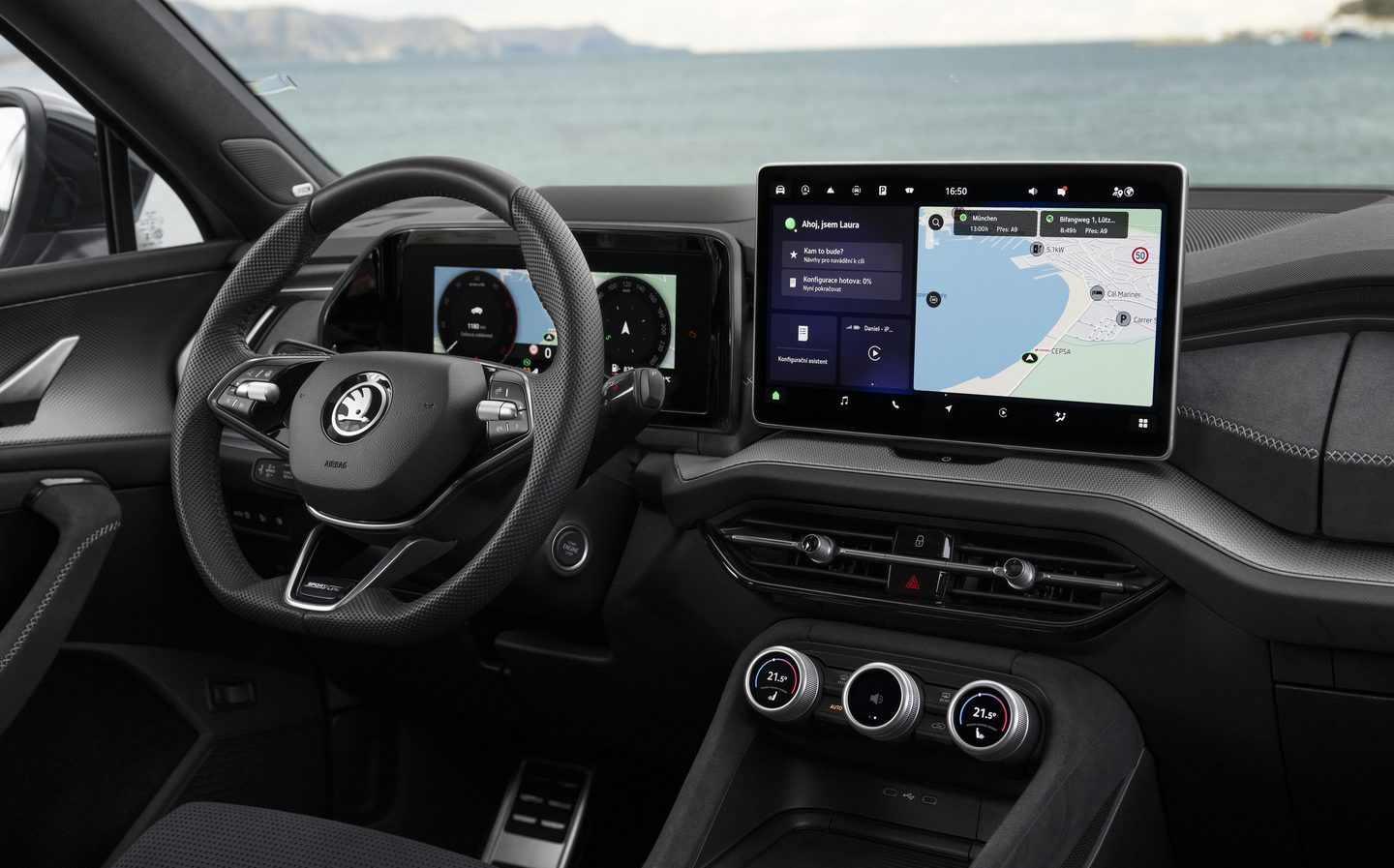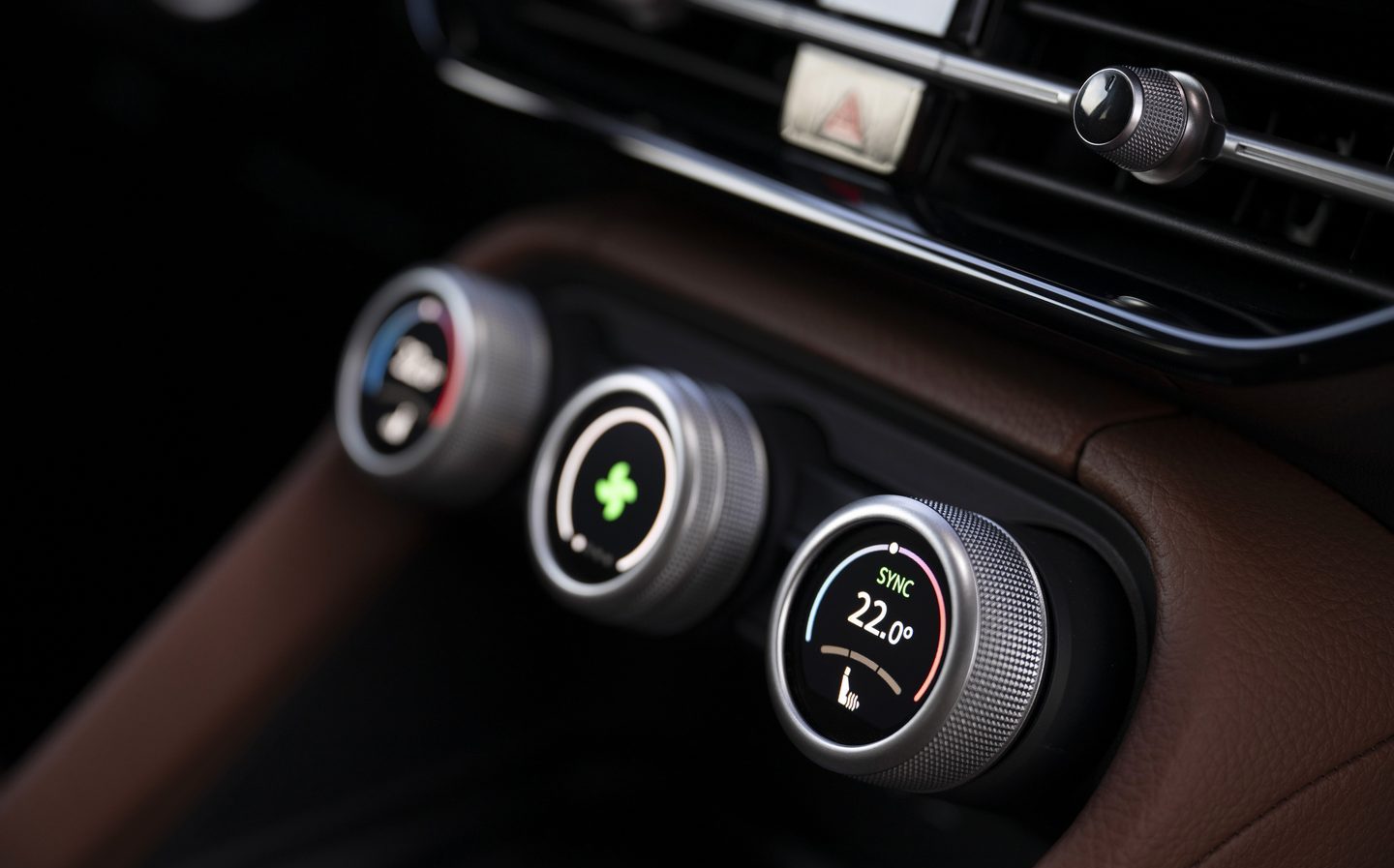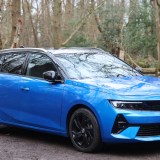Skoda Kodiaq 2024 review: All new but business as usual for brilliant seven-seat SUV
Baby not thrown out with the bath water
When you’ve got a good thing going, changing it is fraught with risk. Just ask anyone who tried to follow Sir Alex Ferguson at Manchester United. Or the engineers and designers at Skoda, who were tasked with improving the ever-popular Kodiaq family SUV.
With more than 850,000 of the first-generation Kodiaq sold worldwide, and with the car still leading the class in the eyes of critics, the chances of messing up the second iteration seven-seater were arguably greater than the likelihood of improving it. But while Skoda could have been forgiven for simply freshening up the existing car with a few subtle tweaks, the Czech company set about changing everything.

There’s an all-new body with an updated roof design and nose, complete with clever new headlights. The whole car is much more streamlined than its predecessor, which helps to keep the emissions down and fuel economy up. But we aren’t convinced by the design overall, and particularly the new grille that looks as though it was inspired by the old Suzuki S-Cross. Or perhaps a cheese grater.
The interior design is much more convincing, however, with a minimalist cabin that manages to look much more upmarket than many will expect from a Skoda. Admittedly, it hasn’t turned into a Bentley overnight, but Skoda no longer sees itself as a budget- or value-orientated brand; it’s swimming in the mainstream now.
And it deserves to be there, with the kind of build quality that makes the whole thing feel as though it’s hewn from one solid lump. Everything that’s supposed to move does so with a smoothness and substance that’s reassuring, while everything that’s not supposed to move stays obstinately in place.

But as well as maintaining its granite solidity, the Kodiaq has been thoroughly modernised, even if practicality remains at the heart of the design. For example, the repositioning of the gear selector to the steering column has freed up storage space in the centre console, and there’s a massive 13in touchscreen to reduce the need for buttons on the dash.
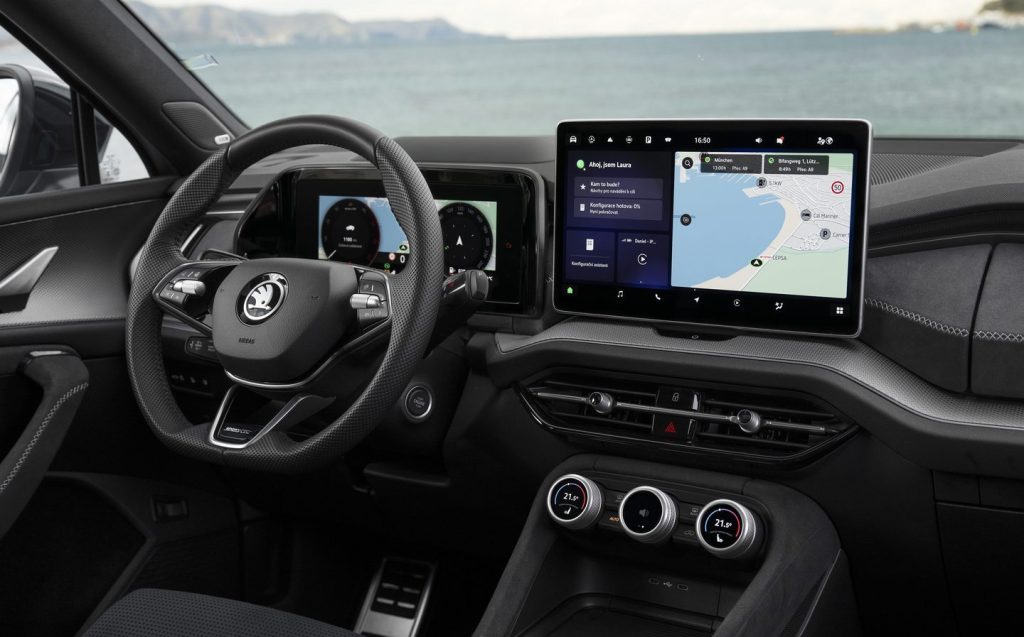
Admittedly, we’re sceptical of that approach, and the screen is the car’s weak spot, thanks to fiddly menus meaning functions hide as effectively as a commando in a rainforest. Thankfully, though, the air conditioning system is still controlled by proper dials, which immediately puts the Kodiaq ahead of some competitors — including from VW Group stablemates — in our book.
Even bigger than the massive touchscreen, however, is the cavernous boot. You can choose whether you go for a five- or seven-seat Kodiaq, and you clearly get more luggage in the former, but the latter’s 340-litre boot capacity with all seven seats occupied is still respectable (and the same as an Audi A3 Sportback).
The 845-litre space when the rear-most seats are folded is more than anyone is likely to need. Dropping the second row down will free up more than 2,000 litres of cargo space. There are ballrooms that are less capacious.
The Kodiaq’s second row of seats are commodious, too, but space in the optional third row isn’t quite so generous, despite Skoda’s claims. The Czech experts on hand during the car’s launch said there’s more room back there than ever before, but adults still wouldn’t fancy being crammed in there for long.

But there’s more to practicality than just legroom and boot space. As before, Skoda has ensured the Kodiaq has lots of storage for odds and ends, including not one but two glove boxes. Werll, one can never have too many gloves.
There are the company’s now-famous “Simply Clever” features dotted throughout, of course. Most of them are exercises in common sense — the little funnel built into the washer fluid filler cap, for example — but others are well-worn Skoda trademarks, such as the umbrella in the doors or the ice scraper in the fuel filler cap. They’re all well thought through, and they make living with the Kodiaq every day that little bit easier.
As does the engine range. There’s a 148bhp, 1.5-litre mild-hybrid petrol option to provide an entry point, joined by a plug-in hybrid that produces up to 197bhp and a zero-emission range of up to around 60 miles, according to the official test (expect less in the real world, particularly during colder months).
But while that system is generally quiet (if you don’t demand full power), and families who spend most of their time pootling between school, home and hobbies will find it saves a lot of fuel, the PHEV version will appeal mostly to company car drivers looking to keep their cash away from HMRC, as the benefit in kind tax breaks are attractive at present.
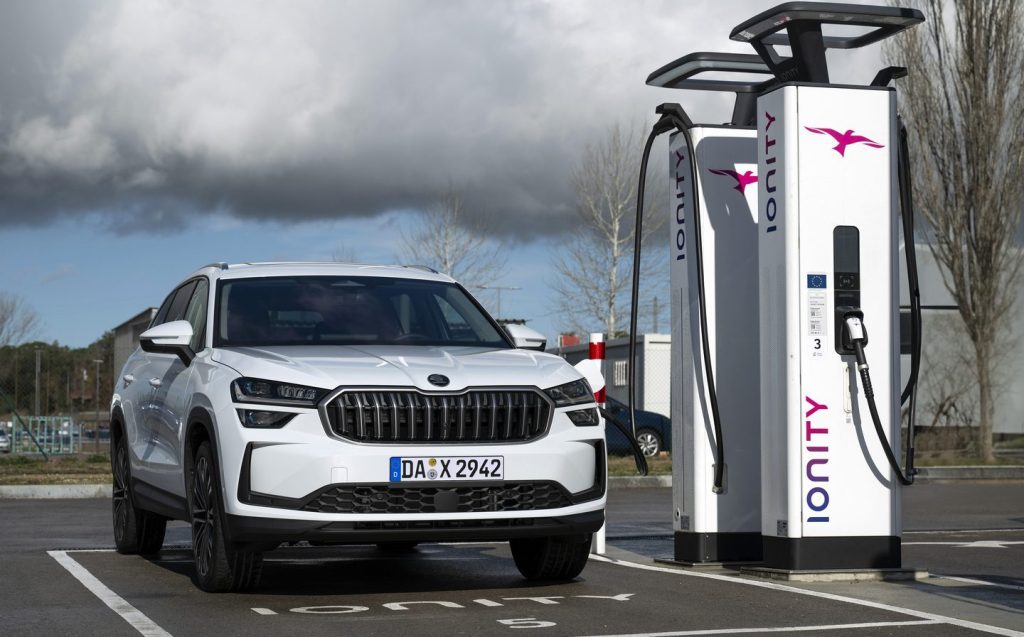
Most buyers will prefer the diesel engines that combine power, towing ability and efficiency on long motoring journeys. Diesel might not be a firm favourite in the new car market right now, but it makes most sense in the Kodiaq, where buyers can choose between the 148bhp, front-wheel-drive 2-litre model or the 190bhp, all-wheel-drive alternative. Both come with a seven-speed automatic gearbox as standard.
For most, the front-wheel-drive option will be the most appealing, thanks to its economy of more than 50mpg and lower pricing, but we think the more powerful option is the one to go for, thanks to its greater performance on- and off-road, and its extra towing capability.

A 2-litre petrol option and a ‘hot’ vRS model are on the way, too, but only those with a desperate desire to hand all their money to the oil companies should look at those.
Not that the Kodiaq is really a performance SUV. It’s still capable, though. Although we only tested the car on Spain’s smooth asphalt, we could still tell the ride is supple and silky without completely isolating you from the imperfections in the road surface.
And despite that comfort, it doesn’t handle badly. Normally, supple suspension is merely a euphemism for boat-like handling, but the Kodiaq keeps its big body in check quite neatly, although roll is still evident when you throw it into a corner. Not that it encourages that sort of behaviour. The steering is a bit numb and light, but it’s precise enough that you can still have a little bit of fun if you want to. Just not too much.

Strangely, you can get more from the Kodiaq if you venture off-road, where it puts up a surprisingly competent display. The all-wheel-drive Kodiaq comes with a handy off-road mode that allows access to Land Rover-style features including hill descent control and a screen that shows you where the front wheels are pointing.
Combine all that with some all-season tyres and the Kodiaq will be perfectly at ease when the snow starts to fall, and it’ll cope with far more than customers will ever demand of it. It would likely make a great tow car, too.
But while the Kodiaq gives you more all-round capability than Ben Stokes, it doesn’t have the value credentials it once did. Prices start at £36,645 for a basic, five-seat SE model with the 1.5-litre petrol engine, while our high-end, seven-seat, high-powered diesel test car was pushing £50,000 with a few choice options. That’s enough to incur the government’s premium vehicle levy, which at the time of writing increases road tax to £600 per year from years two to six after registration, and that feels wrong in a Skoda.

But then this is a car that feels more premium than ever before, and the £40,000 list price threshold at which the £410 “expensive vehicle surcharge” kicks in is probably a bit outdated, given modern car prices. Plenty of new Golfs cost more than that.
Even so, while the Kodiaq undercuts the Kia Sorento (from £41,995) and Hyundai Santa Fe (from £47,020), it is a smidge dearer than its biggest rivals, with the Nissan X-Trail (from £32,925) and the Seat Tarraco — a close relative of the Skoda (from £33,450).
But fiddly touchscreen and a marginally high price aside, we’re struggling to find any serious problems with this car. The Kodiaq is almost devoid of weaknesses, and it’s rare that we come across such a complete package. Shave a couple of grand from the price, sort out the touchscreen and you’d be looking at one of the best cars currently on sale today. As it is, it’s just the best car in its class.
Related articles
- If you found our review of the Skoda Kodiaq interesting, you might like to read our review of the new Skoda Superb Estate, too
- Want to know what the best-selling cars in the UK are?
- Looking for something more compact? Read our extended test report on the Skoda Kamiq
Latest articles
- Aston Martin Valkyrie AMR-LMH hypercar hits track ahead of 2025 Le Mans challenge
- Porsche has begun testing the electric Cayenne
- Cupra Leon 272 eHybrid 2024 review: Bigger battery, better tech … but is it a Cupra?
- Porsche 911 GTS 2024 review: Hybrid heresy or more Stuttgart genius?
- Extended test: 2023 Vauxhall Astra Sports Tourer GS PHEV
- Ford Capri revival has faced a lot of flak… but are buyers put off? Here’s what visitors to the Festival of Speed had to say
- F1 2024 calendar and race reports: What time the next grand prix starts and what happened in the previous rounds
- ‘No timeframe’ for how long Volvo’s returning estate cars will be on sale in UK
- Kia Picanto 2024 review: Updates add spice to cute Korean city car





